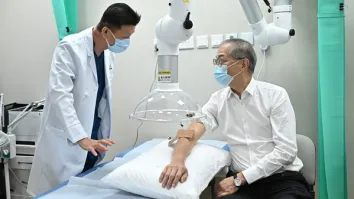
Asia Pacific healthcare market predicted to expand to US$2.3b
South Asia market will drive much of the growth.
The Asia Pacific healthcare sector's growth trajectory will be decidedly positive.
According to a research note from BMI Research, the expansion of universal healthcare across the region will boost utilization of medical services, even as the prevalence of chronic diseases rise in tandem with the shift in lifestyles and an ageing population. Consequently, private healthcare providers will be highly active, expanding their presence and undertaking measures to attract medical tourists within Asia.
Here's more from BMI Research:
The USD1,690 bn/EUR1,527bn Asia Pacific market is forecast to expand to USD2,271bn/EUR2,271bn with a 8.1% CAGR at constant exchange rates (CER) through to 2021. The USD128 bn/EUR115bn South Asia market will be a strong driver of growth (12.3% CAGR through to 2021), followed by the USD114bn/EUR103bn South East Asia market (9.2% CAGR through to 2021).
The USD824bn/EUR744 bn North East Asia market is also expected to grow steadily (11.02% CAGR through to 2021). In contrast, the USD143bn/EUR133bn Australia and New Zealand market will see a more modest growth rate (4.1% CAGR through to 2021). Asia Pacific's healthcare market will post a five-year CAGR of 6.1% in US dollar terms and 8.3% in euro terms.
The region's growth in healthcare spending will be supported by myriad factors. Chronic diseases are on the rise across the region as the aged population grows and as lifestyles shift in tandem with higher levels of urbanisation.
In addition, several markets have implemented or intend to roll out universal healthcare, which will alleviate financial barriers to medical services and increase utilisation rates.
This in turn incentivizes private healthcare providers to be more active, establishing clinics or hospitals in Asia, and increases participation in the medical tourism industry.



















 Advertise
Advertise








